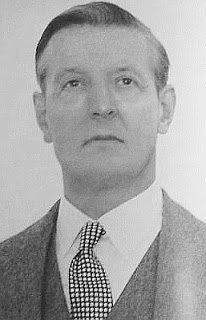Sidney, William Philip
- Date of birth:
- May 23rd, 1909 (Chelsea, London, Great Britain)
- Date of death:
- April 5th, 1991 (Penhurst, Kent, Great Britain)
- Nationality:
- British
Biography
Do you have more information about this person? Inform us!
- Period:
- Second World War (1939-1945)
- Rank:
- Temporary Major
- Unit:
- 5th Battalion, Grenadier Guards
- Awarded on:
- March 30th, 1944
"For superb courage and utter disregard of danger in the action near Carroceto, in the Anzio Beach Head, in February, 1944.
The period 6th-10th February, 1944, was one of critical importance to the whole state of the Anzio Beach Head. The Germans attacked a British Division with elements of six different divisions and a continuous series of fierce local hand-to-hand battles was fought, each one of which had its immediate reaction on the position of other troops in the neighbourhood and on the action as a whole. It was of supreme importance that every inch of ground should be doggedly, stubbornly and tenaciously fought for. The area Carroceto-Buonriposo Ridge was particularly vital.
During the night 7th-8th February, Major Sidney was commanding the support company of a battalion of the Grenadier Guards, company headquarters being on the left of battalion headquarters in a gully South-West of Carroceto Bridge. Enemy infantry who had by-passed the forward rifle company North-West of Carroceto, heavily attacked in the vicinity of Major Sidney's company headquarters and successfully penetrated into the wadi. Major Sidney collected the crew of a 3 inch mortar firing nearby and personally led an attack with Tommy guns and hand grenades, driving the enemy out of the gully. He then sent the detachment back to continue their mortar firing while he and a handful of men took up a position on the edge of the gully in order again to beat off the enemy who were renewing their attack in some strength. Major Sidney and his party succeeded in keeping the majority of the Germans out but a number reached a ditch 20 yards in front, from which they could outflank Major Sidney's position. This officer— in full view and completely exposed—dashed forward without hesitation to a point whence he could engage the enemy with his Tommy gun at point blank range. As a result the enemy withdrew leaving a number of dead.
On returning to his former position on the edge of the gully, Major Sidney kept two guardsmen with him and sent the remainder back for more ammunition and grenades. While they were away, the enemy vigorously renewed his attack, and a grenade struck Major Sidney in the face, bounced off and exploded, wounding him and one guardsman and killing the second man. Major Sidney, single-handed and wounded in the thigh, kept the enemy at bay until the ammunition party returned five minutes later, when once more the enemy were ejected. Satisfied that no further attack would be made, he made his way to a nearby cave to have his wound dressed, but before this could be done the enemy attacked again. He at once returned to his post and continued to engage the enemy for another hour, by which time the left of the battalion position was consolidated and the enemy was finally driven off. Only then did Major Sidney, by that time weak from loss of blood and barely able to walk, allow his wound to be attended to.
Throughout the next day contact with the enemy was so close that it was impossible to evacuate this officer until after dark. During that time, as before, although extremely weak, he continued to act as a tonic and inspiration to all with whom he came in contact.
Throughout the engagement Major Sidney showed a degree of efficiency, coolness, gallantry and complete disregard for his personal safety of a most exceptional order, and there is no doubt that as a result of his action, taken in the face of great odds, the battalion's position was re-established with vitally far reaching consequences on the battle as a whole. "
William Philip Sidney (Viscount de L'Isle) is buried in the family tomb, St.John the Baptist Church, Penshurst, Great Britain.
- Unit:
- Governor-General and Commander-in-Chief (designate) of the Commonwealth of Australia
- Awarded on:
- May 11th, 1961
Sources
- Photo: Wikipedia
- - Victoria Cross Reference
- The Register of the Victoria Cross - uitgegeven door This Engeland 1997 - ISBN 0906324270
- Clark, L., Anzio – The Friction of War – Italy and the Battle for Rome, Headline Publishing Group, London, England, 2006
- Speciale dank aan Iain Stewart van The History of the Victoria Cross
- Page 1477 | Supplement 36445, 28 March 1944 | London Gazette | The Gazette
- Page 11102 | Supplement 51488, 3 October 1988 | London Gazette | The Gazette
- https://www.thegazette.co.uk/London/issue/44571/page/4645








